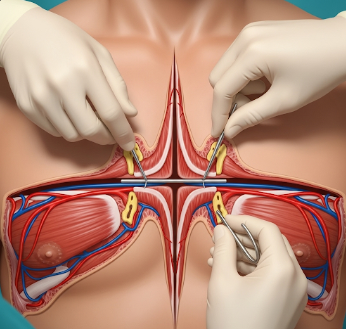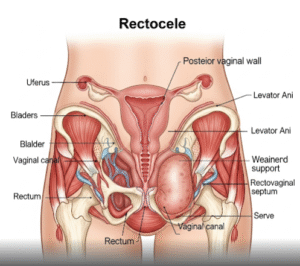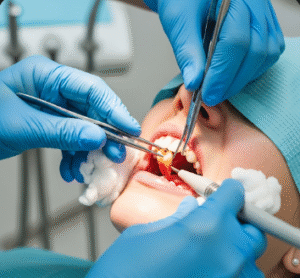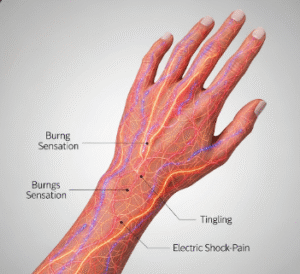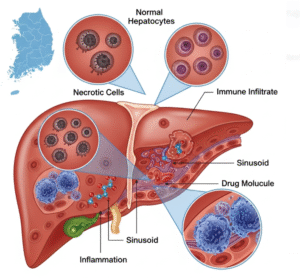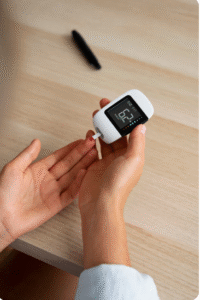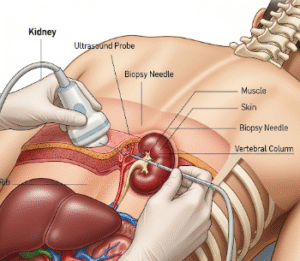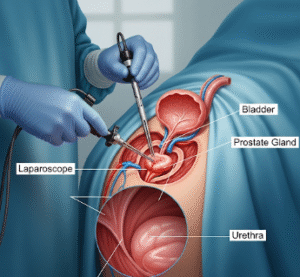Overview
The Ravitch procedure is a surgical technique used to correct pectus excavatum, a congenital condition where the sternum and chest wall are sunken inward, causing cosmetic concerns and, in severe cases, cardiopulmonary compromise.
South Korea is renowned for experienced thoracic surgeons, advanced minimally invasive and open techniques, and comprehensive post-operative care, making the Ravitch procedure safe, effective, and aesthetically satisfying.
What is the Ravitch Procedure?
The Ravitch procedure involves removal of abnormal costal cartilages, repositioning of the sternum, and placement of support to maintain chest wall shape. Key points include:
✔ Corrects chest wall deformities for both functional and cosmetic improvement.
➔ Open surgical approach allowing direct visualization of chest structures.
● Often combined with cartilage grafting or stabilization bars for structural support.
★ Provides durable, long-term correction of pectus excavatum.
This procedure is recommended for patients with moderate to severe pectus excavatum, especially when symptoms such as shortness of breath, chest pain, or exercise intolerance are present.
What are the Benefits?
The Ravitch procedure offers several advantages:
✔ Improves chest wall appearance and symmetry.
➔ Relieves cardiopulmonary symptoms in severe cases.
● Durable correction: Results are generally permanent with low recurrence.
★ Improves self-confidence and quality of life.
➤ Customizable approach depending on the severity of deformity.
Procedure Details
1) How should I prepare for the Ravitch Procedure?
Preparation ensures safety and optimal results:
✔ Medical evaluation: Chest X-ray, CT scan, echocardiography, and pulmonary function tests.
➔ Medication review: Adjust blood thinners and other medications as advised.
● Lifestyle adjustments: Avoid smoking; optimize overall health.
★ Preoperative counseling: Discuss procedure steps, recovery expectations, and potential risks.
➤ Anesthesia evaluation: General anesthesia required for surgery.
2) What happens during the Ravitch Procedure?
The procedure is performed under general anesthesia in a hospital operating room:
✔ Incision: Midline chest incision over the sternum.
➔ Cartilage removal: Abnormal costal cartilages are excised to release the sternum.
● Sternal repositioning: Sternum elevated to a normal anatomical position.
★ Stabilization: May include support bars, mesh, or sutures to maintain chest wall shape.
➤ Closure: Incision closed with sutures; chest tubes may be placed temporarily.
✔ Procedure duration: Typically 2–4 hours depending on complexity.
Korean thoracic surgeons emphasize precise cartilage removal and sternal alignment to minimize complications and optimize aesthetic results.
3) What happens after the Ravitch Procedure?
Post-operative care focuses on pain management, respiratory support, and gradual recovery:
✔ Hospital stay: Usually 4–7 days depending on surgery and patient age.
➔ Pain management: Epidural, IV analgesics, or oral pain medications.
● Activity restriction: Avoid heavy lifting or strenuous activity for several weeks.
★ Respiratory exercises: Breathing exercises to prevent lung complications.
➤ Follow-up: Monitor chest wall healing, sternal position, and bar removal if used (typically 6–12 months).
Risks / Benefits
Possible Risks:
✔ Infection at incision site
➔ Bleeding or hematoma
● Pneumothorax or lung injury
★ Bar displacement or sternal instability (if support bars used)
➤ Rare cardiac injury or arrhythmia
Major Benefits:
✔ Corrects chest wall deformity and improves appearance
➔ Relieves functional cardiopulmonary symptoms
● Durable long-term results with low recurrence
★ Improves self-esteem and body image
➤ Performed by experienced Korean thoracic surgeons for high safety and precision
Recovery and Outlook
✔ Immediate recovery: Monitoring in hospital for several days.
➔ Pain and swelling: Managed with analgesics; peaks in the first 48–72 hours.
● Return to activity: Light activity within 2–4 weeks; strenuous activity after 2–3 months.
★ Long-term outcome: Chest wall maintains corrected shape; bar removal may be required in some cases.
➤ Follow-up: Regular imaging to assess sternum position and healing.
When To Call the Doctor
Contact your doctor immediately if you notice:
✔ Fever, chills, or signs of infection
➔ Severe or worsening chest pain
● Difficulty breathing or shortness of breath
★ Unusual swelling or redness along incision or bar site
➤ Bar displacement or chest wall instability
Best Korea Option / Process
South Korea provides expert Ravitch procedure services with:
✔ Leading hospitals: Samsung Medical Center, Asan Medical Center, Severance Hospital Thoracic Surgery.
➔ Experienced thoracic surgeons skilled in both open and minimally invasive chest wall correction.
● Comprehensive perioperative care: Pre-op evaluation, surgery, post-op monitoring, and long-term follow-up.
★ Advanced pain management and respiratory support for optimal recovery.
➤ Medical tourism support: Translation, appointment coordination, and continuity of care for international patients.
✅ Highlights:
✔ Ravitch procedure corrects pectus excavatum with long-term durability
➔ Open surgical approach with precise cartilage removal and sternal repositioning
● Improves cardiopulmonary function and self-confidence
★ Risks include infection, bleeding, pneumothorax, or bar displacement
➤ Korean hospitals provide expert surgeons, advanced techniques, and comprehensive post-op care

